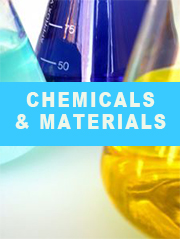Report overview
Calcium-zinc stabilizer is synthesized with calcium salt, zinc salt, lubricant, antioxidant, etc. as the main components by a special compounding process. It can not only replace toxic stabilizers such as lead and cadmium salts and organic tin, but also has good thermal stability, light stability, transparency and tinting strength. Practice has proved that in PVC resin products, it has good processing performance and thermal stability equivalent to lead salt stabilizers, which is a good non-toxic stabilizer.
This report aims to provide a comprehensive presentation of the global market for Calcium-Zinc Heat Stabilizer, with both quantitative and qualitative analysis, to help readers develop business/growth strategies, assess the market competitive situation, analyze their position in the current marketplace, and make informed business decisions regarding Calcium-Zinc Heat Stabilizer. This report contains market size and forecasts of Calcium-Zinc Heat Stabilizer in global, including the following market information:
Global Calcium-Zinc Heat Stabilizer Market Revenue, 2018-2023, 2024-2029, ($ millions)
Global Calcium-Zinc Heat Stabilizer Market Sales, 2018-2023, 2024-2029, (Tons)
Global top five Calcium-Zinc Heat Stabilizer companies in 2022 (%)
The global Calcium-Zinc Heat Stabilizer market was valued at US$ million in 2022 and is projected to reach US$ million by 2029, at a CAGR of % during the forecast period. The influence of COVID-19 and the Russia-Ukraine War were considered while estimating market sizes.
Liquid calcium-zinc stabilizer is a complex of calcium-zinc organic salts, phosphites, polyols, antioxidants and solvents. Liquid calcium zinc stabilizer has good compatibility with resin and plasticizer, good transparency, not easy to precipitate, less dosage and easy to use. The main disadvantage is that the lubricity is poor, the softening point of the product is reduced, and the long-term storage will deteriorate.
The solid complex calcium-zinc soap stabilizer is dominated by stearic acid soap, followed by lauric acid soap and oleic acid soap. The product is characterized by good lubricity, does not reduce the softening point of PVC rigid products, and is suitable for the processing of rigid PVC pipes and profiles.
We surveyed the Calcium-Zinc Heat Stabilizer manufacturers, suppliers, distributors and industry experts on this industry, involving the sales, revenue, demand, price change, product type, recent development and plan, industry trends, drivers, challenges, obstacles, and potential risks.
Total Market by Segment:
Global Calcium-Zinc Heat Stabilizer Market, by Type, 2018-2023, 2024-2029 ($ Millions) & (Tons)
Global Calcium-Zinc Heat Stabilizer Market Segment Percentages, by Type, 2022 (%)
Liquid
Powder
Global Calcium-Zinc Heat Stabilizer Market, by Application, 2018-2023, 2024-2029 ($ Millions) & (Tons)
Global Calcium-Zinc Heat Stabilizer Market Segment Percentages, by Application, 2022 (%)
Wire and Cable
Profiles and Tubes
Injection Molding
Other
Global Calcium-Zinc Heat Stabilizer Market, By Region and Country, 2018-2023, 2024-2029 ($ Millions) & (Tons)
Global Calcium-Zinc Heat Stabilizer Market Segment Percentages, By Region and Country, 2022 (%)
North America
US
Canada
Mexico
Europe
Germany
France
U.K.
Italy
Russia
Nordic Countries
Benelux
Rest of Europe
Asia
China
Japan
South Korea
Southeast Asia
India
Rest of Asia
South America
Brazil
Argentina
Rest of South America
Middle East & Africa
Turkey
Israel
Saudi Arabia
UAE
Rest of Middle East & Africa
Competitor Analysis
The report also provides analysis of leading market participants including:
Key companies Calcium-Zinc Heat Stabilizer revenues in global market, 2018-2023 (Estimated), ($ millions)
Key companies Calcium-Zinc Heat Stabilizer revenues share in global market, 2022 (%)
Key companies Calcium-Zinc Heat Stabilizer sales in global market, 2018-2023 (Estimated), (Tons)
Key companies Calcium-Zinc Heat Stabilizer sales share in global market, 2022 (%)
Further, the report presents profiles of competitors in the market, key players include:
Silma
ADD-Chem
ADEKA
ALA Chemicals
Addenda
Akdeniz Chemson
Baerlocher
Belike chemicals
Coin Chemical
En-Door Polymer Additives
FACI
GCH Technology
Galata Chemicals
Goldstab Organics
Grandorth
Hammond Group
KD Chem
Kolon Industries
Lamberti
Norac
Novista
Patcham
Peter Greven
Polytrans
GuangDong Sky Bright
Outline of Major Chapters:
Chapter 1: Introduces the definition of Calcium-Zinc Heat Stabilizer, market overview.
Chapter 2: Global Calcium-Zinc Heat Stabilizer market size in revenue and volume.
Chapter 3: Detailed analysis of Calcium-Zinc Heat Stabilizer manufacturers competitive landscape, price, sales and revenue market share, latest development plan, merger, and acquisition information, etc.
Chapter 4: Provides the analysis of various market segments by type, covering the market size and development potential of each market segment, to help readers find the blue ocean market in different market segments.
Chapter 5: Provides the analysis of various market segments by application, covering the market size and development potential of each market segment, to help readers find the blue ocean market in different downstream markets.
Chapter 6: Sales of Calcium-Zinc Heat Stabilizer in regional level and country level. It provides a quantitative analysis of the market size and development potential of each region and its main countries and introduces the market development, future development prospects, market space of each country in the world.
Chapter 7: Provides profiles of key players, introducing the basic situation of the main companies in the market in detail, including product sales, revenue, price, gross margin, product introduction, recent development, etc.
Chapter 8: Global Calcium-Zinc Heat Stabilizer capacity by region & country.
Chapter 9: Introduces the market dynamics, latest developments of the market, the driving factors and restrictive factors of the market, the challenges and risks faced by manufacturers in the industry, and the analysis of relevant policies in the industry.
Chapter 10: Analysis of industrial chain, including the upstream and downstream of the industry.
Chapter 11: The main points and conclusions of the report.
